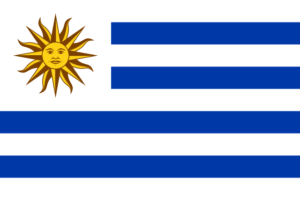
Region: Americas
Disability Definition
Uruguay’s Law 18.651 defines a person with a disability as “any person who suffers or presents a permanent or prolonged functional, physical (motor, sensory, organic, visceral) or mental (intellectual and / or mental) alteration that in relation to their age and social environment implies considerable disadvantages for their family, social, educational or work integration.”
Legislation
Law 18.651 aims to “establish a comprehensive protection system for people with disabilities, aimed at ensuring their medical care, their education, their physical, mental, social, economic and professional rehabilitation and their social security coverage, as well as granting them benefits, social security, and incentives” (translated). The law outlines inclusion procedures, such as vocational training programs for people with disabilities.
Uruguay adopted the UN’s Convention on the Rights of Persons with Disabilities in 2008.
Employer Legal Requirements
Employers must meet the following hiring quotas for people with disabilities outlined in Law 19,691:
1) During the first year of validity of the law:
A) Employers with 500 or more workers: 3%
B) Employers with 150 or more workers and less than 500: 2%
C) Employers with 50 or more workers and less than 150: 1%
2) During the second year of validity of the law:
A) Employers with 500 or more workers: 4%
B) Employers with 150 or more workers and less than 500: 3%
C) Employers with 50 or more workers and less than 150: 2%
D) Employers with less than 50 workers and more of 25: 1.5%
Accessibility Requirements
Article 78 provides that in order to fulfil the obligations under article 76 of the Act, it is necessary to comply with the relevant provisions of the UNIT technical standards on accessibility, also taking into account the items specified below and anything that is not referred to explicitly but is considered appropriate:
- Pedestrian pathways: these must be of a minimum width throughout to allow for the passage of wheelchair users. Floors must have a non-slip surface without any bumps or holes that could obstruct wheelchair users. The design, gradient and incline of slopes of all kinds must be such that the accessibility, usability and safety of persons with disabilities are ensured;
- Stairs and ramps: the use of stairs must be facilitated for persons with disabilities and stairs must be equipped with handrails. Ramps must have the characteristics set out for slopes in paragraph 1 above;
- Parks, gardens, squares and open spaces: pedestrian routes must comply with the provisions established for pathways in paragraph 1 above. Public toilets must be accessible and usable by persons with disabilities;
- Parking: on-street parking must include designated reserved accessible places, close to pedestrian access points, for vehicles transporting persons with disabilities;
- Signs and street furniture: these must be accessible and such that they do not pose an obstacle, particularly for blind or visually impaired persons or wheelchair users; Further information in Article 9 of Convention on the Rights of Persons with Disabilities
Cultural Norms
Uruguay has the legal framework to ensure disability inclusion, but lacks enforcement of those laws: “According to the INDDHH, persons with disabilities continued to experience human rights abuses. Persons with disabilities living in both private and government-run facilities were unprotected and vulnerable due to lack of effective mechanisms for supervision. According to an August report on social inclusion published by the World Bank, persons with disabilities faced numerous obstacles, especially in the labor market, education, and public spaces. While the national rate of persons who completed only primary education or less was 40 percent, among persons with disabilities it reached 57 percent, and among persons with severe disabilities it was 72.5 percent. According to the study, only 450 of 1,500 buses in Montevideo were accessible to persons with disabilities, and they operated with limited frequency and in limited areas of the city, significantly restricting mobility of persons with disabilities. The report also emphasized the lack of adequate data to analyze this problem and therefore adequately address the needs of the disability community” (2020 Country Reports on Human Rights Practices: Uruguay)
Business Practices/Examples
Additional content coming soon.Insights
According to the 2011 national census, 517,771 of the 3,251,654 people in Uruguay have a disability, which is 15.9% of the population. 365,462 people have a slight disability, 128,876 a moderate disability and 23,433 a severe disability. Convention on the Rights of Persons with Disabilities
Uruguay has a National Disability Program (PRONADIS) run by the Ministry of Social Development, which has information on assistive devices for people with disabilities.
Supplier Diversity
Additional content coming soon.Talent Sourcing Resources
Christian Blind Mission International (CBM) – Wherever possible, it is the aim to provide these services within the communities. Therefore, Community-based Rehabilitation programmes are promoted. The focus of CBM’s work is to enable local and national partners in developing countries to implement services for people with disabilities, mainly for people with: Visual disabilities, Hearing disabilities, Physical disabilities, Mental disabilities, or Intellectual disabilities.
Additional Resources
Assisting Disabled Persons in Finding Employment: A Practical Guide
